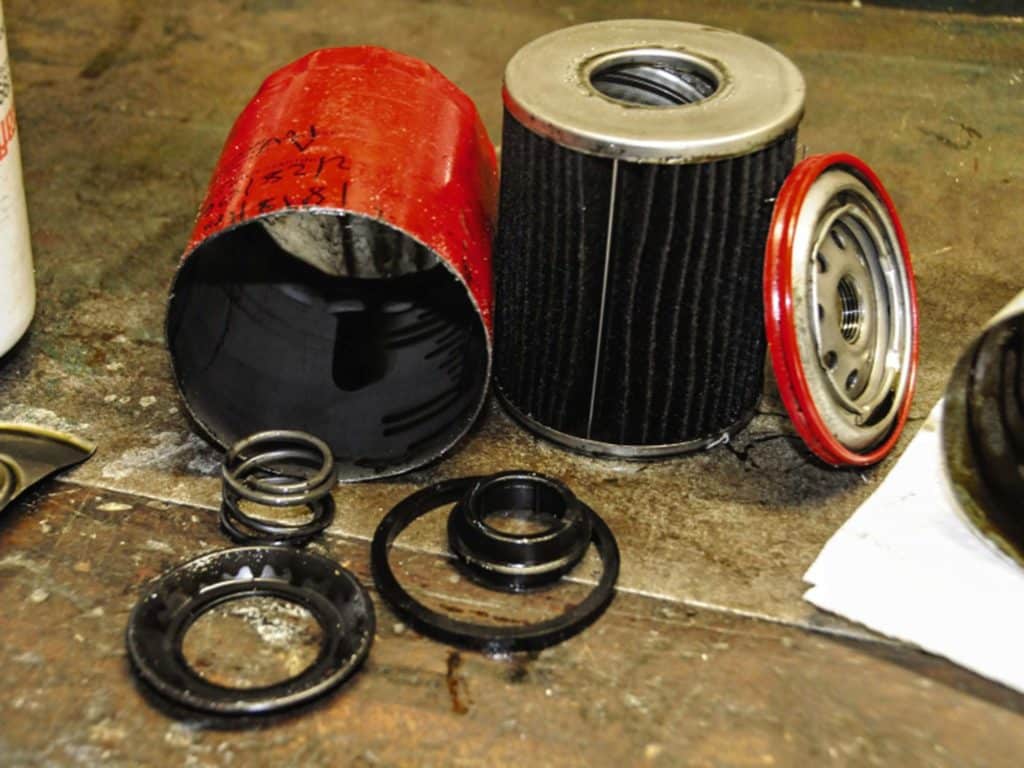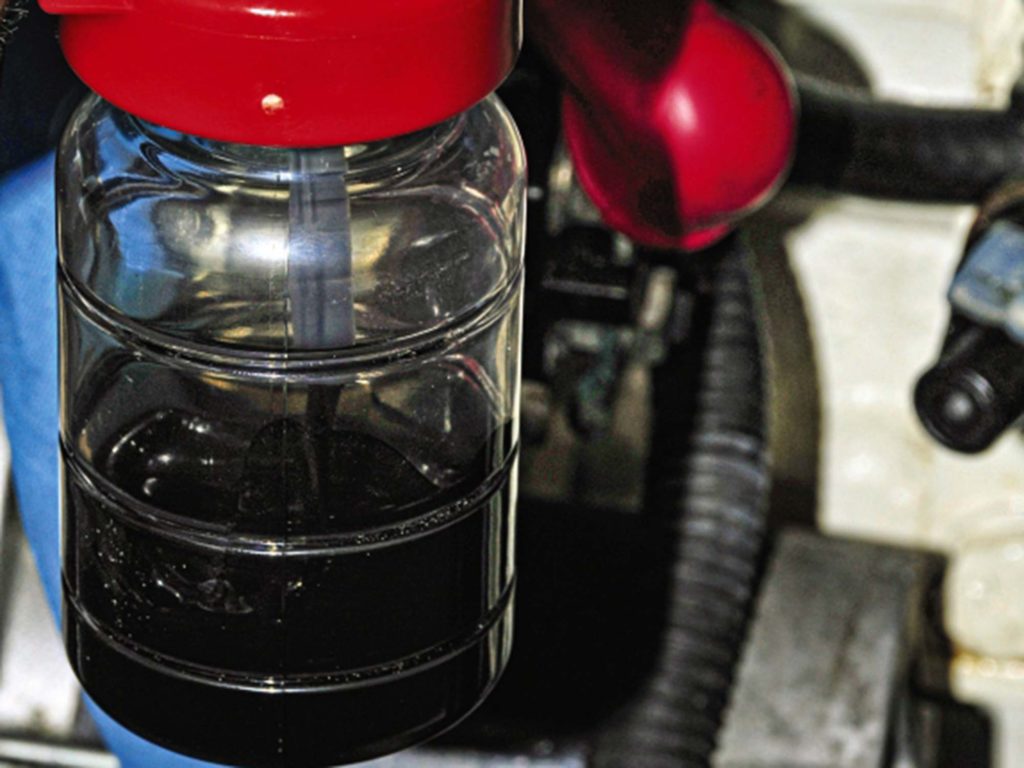
Diesel engines, because they generate a considerable amount of soot, are hard on oil. If you aren’t accustomed to seeing how quickly oil turns black after being changed, you might be surprised by it.
Soot thickens oil, which makes it more difficult for oil to flow into tight tolerances, especially when cold. Also hastening lubricating oil’s demise: anything that slips past the piston rings and enters the crankcase. This includes the byproducts of diesel combustion (such as nitrogen oxide, carbon monoxide and particulate matter), fuel (which dilutes and thins oil, lowering its viscosity), and combustion gases and moisture (which lead to the formation of acid).
New oil is fortified with additives that stave off this deterioration—to a point. The single most important driver of oil changes is acid formation, which is offset by a base additive that neutralizes the acid. Oil analysis calculates this acid-neutralizing ability as the total base number, or TBN. Most new oil starts out with a TBN of 8 to 10; as acid production is offset, that numbers falls. When it reaches 2.5, it’s time for an oil change.

Technically, oil changes should be driven by this figure, however, unless you are prepared to carry out oil analysis (something I strongly recommend), you have no idea of your oil’s condition. You instead must replace it based on engine hours or the calendar. Some oil requires changing every 150 hours or six months, while other oil allows for as much as 450 hours or annual replacement.
The oil you use must meet or exceed the specification in your engine owner’s manual. Oil designed to be used in diesel engines has an American Petroleum Institute-designated C prefix, as opposed to oil destined for use with gasoline engines, which has an S prefix. The C prefix is followed by a second letter that signifies the type of additive package.
You must also use the weight of oil that your engine manufacturer specifies. This might include, for example, a 15W-40 or a straight 30 weight. Stay consistent, and avoid mixing letters or weights.
Oil filters are every bit as important as the oil itself. Quality and construction run the gamut, so don’t skimp; you usually can’t go wrong using the engine manufacturer’s brand, but these can cost considerably more than common retail brands available at auto-parts stores. Having cut open many oil filters over the years, I am impressed by and have had good results with WIX and NAPA Gold filters.

Make certain the area around the filter is clean before and after removing the old filter, and remove the old gasket with the filter. An old gasket will not make a proper seal with a new filter; it can squirt out the entire contents of the crankcase in less than a minute.
Many sail auxiliary engines have a drain hose attached to the bottom of the oil pan, where an oil pump can be connected. (I prefer the manual-vacuum variety. Engine oil should be warm but need not be at full operating temperature to pump easily.) When you’re finished, make sure the drain hose cap is reinstalled. You’ll need two wrenches: one to hold the hex base nut and the other to turn the cap nut.
Refill the engine to the full mark on the dipstick, run the engine for 30 seconds or so, shut down, wait a minute for the oil to run fully into the crankcase, check the dipstick again, and add oil if necessary to top off.
Steve D’Antonio offers services for boat owners and buyers through Steve D’Antonio Marine Consulting.








